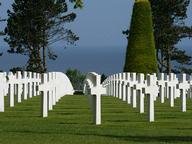
Here's How it Happened Trivia Quiz
Events of the 1940s
The 1940s was a tumultuous decade. It opened with World War II in full swing and closed with a number of nations seeking to gain some advantage. This quiz will look at how those events unfolded without, necessarily, going into the results or consequences
An ordering quiz
by pollucci19.
Estimated time: 3 mins.